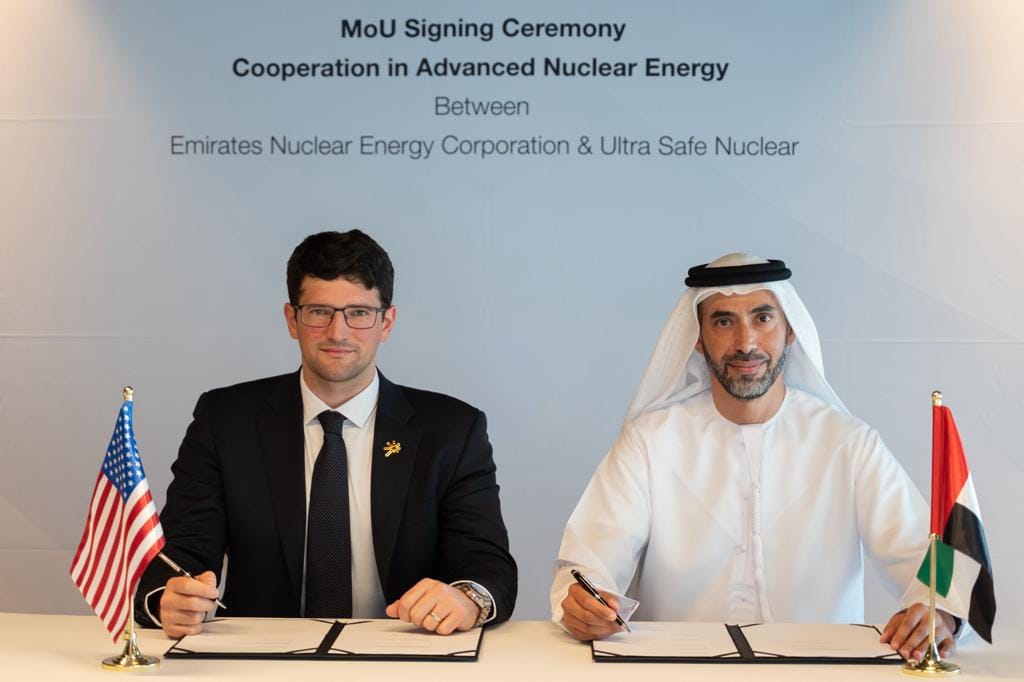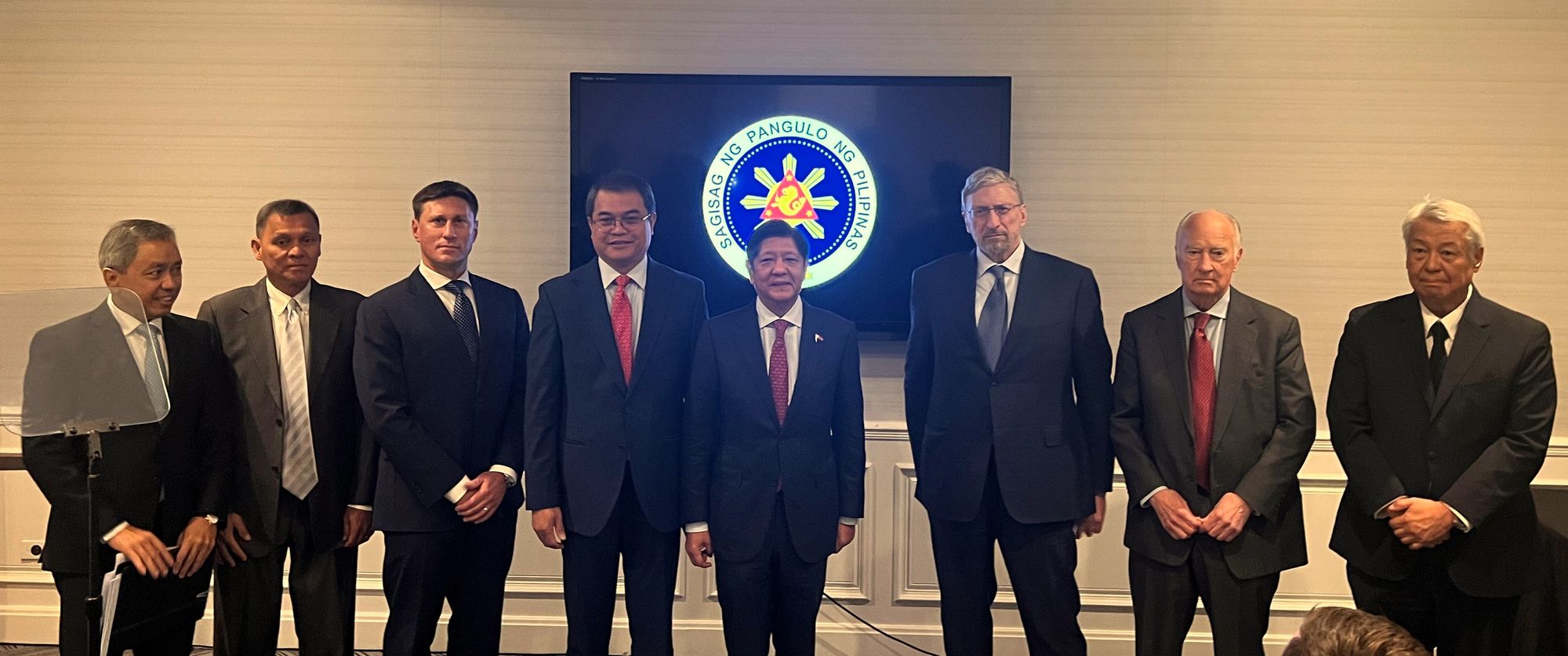MMR® Energy System
Overview
The Micro Modular Reactor (MMR) Energy System is a 4th Generation nuclear energy system that delivers safe, clean, and cost-effective electricity to users anywhere. MMR is being licensed in Canada and the U.S.A. and is the first "fission battery" in commercialization. An orderbook has been established for first users. Demonstration units are scheduled for first nuclear power in 2026.
3.5-15 MWe
Electrical Power10-45 MWth
Thermal Power300 MWyr
Energy ContentAPPLICATIONS
Like batteries, multiple MMR units can be linked together to provide as much power as needed. Multiple MMR units can power communities in the middle of nowhere, large industrial sites, and cities. The modules can be combined in different ways for different sites and needs including integration with renewable micro grids. Need more power? Just add more units.
1. Plant Separation
The MMR Energy System consists of two plants, the Nuclear Plant and the Adjacent Plant. The Nuclear Plant contains the multiple MMR units including all the equipment required to transport the heat to the Adjacent Plant. The Adjacent Plant contains the equipment that converts heat to electricity or process heat as required.
2. Helium
Helium gas is the MMR's primary coolant. The helium passes through the nuclear core and is heated by the controlled nuclear fission process. The helium then transports the heat away from the core to the primary heat exchanger, a smaller pressure vessel to the side of the reactor.
3. Molten Salt Thermal Storage
Heat from the reactor is stored in molten salt tanks similar to concentrated solar powerplants. When demand rises, hot molten salt is used to generate steam and power an electrical turbine. An MMR Energy System will typically store up to 10 hours of power plant thermal output and can be supplemented with hydrogen burners. The use of molten salt thermal storage allows for significant flexibility in the supply of both electricity and process heat. While the MMR unit operates at constant power, electricity and heat are delivered on-demand from the power plant.
4. High Temperature Heat
The MMR’s high temperature heat has many uses beyond generation of electricity. District heating, desalination, and process heat are all possible with the MMR. Any industrial process that uses heat can be fully or partially decarbonized using an MMR. Steam temperatures of 660 °C are simple to deliver, and temperatures up 950 °C are possible in future MMR variants.
LOCATION
MMR can be parked just about anywhere that humans need power. MMR uses no water and has no need for an electrical grid or infrastructure support. MMR is compatible with the harshest climates from arctic to desert to tropical.
Limited Refueling
Operations are simple with minimal maintenance requirements, and no on-site fuel storage, handling, or processing. At the lowest power rating, a fuel core is rated at 20 years of full power. If operation of the Energy System is desired beyond 20 years, a cartridge replacement can be performed.
Total Non-Proliferation
FCM® fuel cannot be re-processed using currently available reprocessing schemes. The MMR fuel cartridge is sealed at the factory and the fuel cannot be accessed.
Standalone
The MMR Energy System can operate as a stand-alone off-grid plant to deliver fully dispatchable and resilient power or can be connected to existing grids.
Total Environmental Protection
There is no risk of spills with environmental impacts during accidents. The nuclear fission products are locked inside the FCM fuel form during and after power production permanently.
MATCH DEMAND
MMR is like a carbon-free natural gas powerplant. It can match changing demand and make up for intermittent renewable power supply. As the sun sets or the wind slows down, the MMR Energy System picks up the slack ensuring demand is always met. No interruptions. No excuses. No carbon. Ultra Farms include MMR units, wind and solar assets to minimize electricity cost while meeting 100% of demand.
Ceramic Core
Fuel Based Safety
Fully Ceramic Micro-encapsulated (FCM) fuel provides inherent reactor safety by being an ultimately safe fuel. Industry standard TRISO particles, which contain the radioactive byproducts of fission within layered ceramic coatings, are encased within a fully dense silicon carbide matrix. This combination provides an extremely rugged and stable fuel with extraordinary high temperature stability.
Building on TRISO
Fully Ceramic Micro-Encapsulated Fuel, or FCM Fuel, is a next-generation TRISO fuel design. We’ve replaced the 60-year-old graphite matrix design with Silicon Carbide (SiC), a material used in tank armor that is phenomenally resistant to radiation and thermal damage. The result is a safer nuclear fuel that can withstand higher temperatures and more radiation.
Radiation and Thermal Resistance
SiC is one of the most capable nuclear materials available. This allows FCM fuel to tolerate extreme radiation and high temperature without significant deterioration in performance and without affecting nuclear reactions.
Full Fission Product Retention
The SiC matrix in FCM fuel provides a dense, gas-tight barrier preventing the escape of fission products even if a TRISO particle should rupture.
Total Non-Proliferation
FCM fuel cannot be re-processed using currently available reprocessing schemes. The MMR fuel cartridge is sealed at the factory, the fuel cannot be accessed.
Safety
Record Setting Safety Metrics
The MMR’s technical solution to safety is to limit the power density of the reactor and increase the surface area so that the reactor can easily dissipate any excess heat without being able to damage itself. The MMR has the lowest power density and highest surface area to power ratio of any reactor ever commercialized. All while using the highest performance fuel in existence.
All the materials and coolants in the MMR are picked to be non-interacting and chemically compatible. Helium is the most benign cooling medium available. The MMR uses helium as it is an inert gas; a radiologically transparent, single-phase gas with no flashing or boiling possible. Helium does not react chemically with the fuel or reactor core components. It is easy to accurately measure and control the helium pressure in the reactor. The FCM fuel ensures the helium is clean and free of fission products.
The MMR is a walk-away safe reactor. In the case of an accident, the MMR reactor cannot melt down, as all heat dissipates passively into the environment without moving parts or fluids, and no matter the scenario. The plant has no need for active systems to remove heat. Additionally, the plant does not need any outside services, including electrical power, to operate safely.

The MMR is an underground (buried) reactor which provides excellent protection against acts of terrorism. But in the case of reactor vessel breach, the primary helium coolant would escape with very little thermal energy and next to zero fission products. FCM fuel provides full containment of radionuclides for each millimeter sized bit of encapsulated fuel. This is micro-containment.
Self Protecting
The powered-on MMR self protects from external events. The citadel building and reactor are designed such that the reactor is inaccessible without specialized equipment.
The MMR has a strong negative temperature feedback in the fuel. As the power or temperature increases, the power is forced backdown by physical characteristics of the materials (no actions or mechanisms) The reactivity margin is sufficient to withstand water submersion and other reactivity insertions.
Other hazards are drastically minimized compared to other reactors, reducing the potential impact of any pressure release. Unlike water or sodium, helium has limited damage potential, especially if clean from fission product gases or dust. The helium is clean and free of fission products by virtue of the TRISO-based fuel forms.
A NEW STANDARD
The MMR raises the safety standard to include events that are currently classified as beyond design basis accidents for other reactor technologies. The MMR has unparalleled tolerance to out of normal conditions, whether it’s natural hazards like flooding and earthquakes or human actions like operator errors or deliberate sabotage. What are high risk and sometimes catastrophic accidents for traditional and other advanced reactors are minor affairs for the MMR - even when scenarios strike simultaneously.
Spent Fuel
There and Back Again
An MMR unit produces 2 metric tons of radioactive spent fuel over 20 years in a confined and solid form factor. Spent fuel caskets can be stored in a commissioned geological repository or the fuel can be reused to extract more energy. After a few hundred thousand years, spent fuel will have the same radioactivity as the original uranium ore used to make the fuel. During that time and beyond, the fully ceramic micro encapsulation of the spent fuel will prevent radioactive material dispersion and contamination of the environment.

GREENFIELD
The standard 2-unit MMR Energy System has a small footprint of less than 5 acres and uses least-impact civil construction techniques. Embedded pylons raise structures above the ground. Cavities are excavated for the reactors and filled in after decommissioning. Modular containers and reactors are shipped in during construction and shipped out at the end of life. There are no water outflows, and spent fuel is never stored on site. MMR installations are temporary.
Manufacturing
Ready to Build
The standard 2-unit MMR Energy System has a small footprint of less than 5 acres and uses least-impact civil construction techniques. Embedded pylons raise structures above the ground. Cavities are excavated for the reactors and filled in after decommissioning. Modular containers and reactors are shipped in during construction and shipped out at the end of life. There are no water outflows, and spent fuel is never stored on site. MMR installations are temporary.
Deployment
First in Class
MMR is being licensed in Canada and the U.S.A. for worldwide deployment. Multiple demonstration projects are underway in Canada and the U.S.A. to accelerate design learning, training capabilities, and establish manufacturing capacity.
Related News
USNC, ENEC to explore MMR Energy System development for the UAE and Three Seas Initiative
The companies will assess the potential use of the MMR® for green molecule production, decarbonization of energy intensive and hard-to-abate sectors, and broader regional developments.
Meralco and USNC advance Micro-Modular Reactor development as a long-term solution to the Philippines’ power needs
* Meralco and USNC sign cooperative agreement to study the deployment of one or more Micro-Modular™ Reactor (MMR®) Energy Systems in the Philippines * Work under this
USNC Boosts MMR Power, Flexibility, and Value
* A technology breakthrough in our patented FCM fuel allows a fuel geometry that results in both higher power and increased safety, enabling the MMR to





